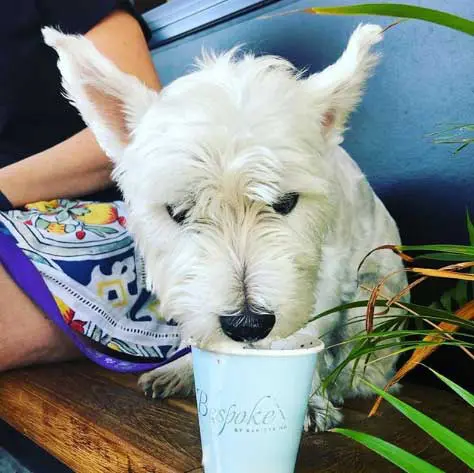Table of Contents
ToggleWhat is Dog Enrichment?
Enrichment is all about providing our dogs with mental stimulation and problem-solving opportunities to keep them happy, healthy, and engaged. Just like us, dogs need variety in their daily routines to prevent boredom and frustration.
One of the easiest ways to add enrichment to your dog’s life? Mealtime! Instead of just handing them a bowl of food, try different feeding methods that encourage them to sniff, forage, manipulate, and work for their food—just like they would in the wild.
Why Does Enrichment Feeding Matter?
Research suggests that dogs experience positive emotional states when they accomplish tasks—whether that’s hunting, solving a puzzle, or foraging for food.
Using enrichment feeding techniques can:
✔ Reduce boredom and destructive behaviours
✔ Boost confidence and problem-solving skills
✔ Provide mental stimulation and slow down fast eaters
✔ Make mealtime more exciting and rewarding
5 Easy Ways to Add Enrichment Feeding to Your Dog’s Routine 🐶
There are many wonderful and creative ways to enrich our dog’s environment, but a simple and straight forward one to start with, is to just replace their food bowl.
If you hide, scatter, or bury your dog’s food, your dog will need to investigate, manipulate, and work for it similar to how he would in non-domestic environments 🏕️
Here are some different ways to do this:
1. Outdoor Food Scattering / Hunting
If your dog eats dry food, try scattering their kibble across the grass or yard instead of using a bowl. Start with a small area and gradually increase the difficulty by expanding the space or hiding food in different locations. This mimics natural foraging and encourages your dog to use their nose and problem-solving skills.
If your dog eats wet food, you can still make it a challenge by dividing their meal into small portions and placing them in different areas.
2. Indoor Food Scattering / Hunting
No backyard? No problem! Use small bowls to hide portions of your dog’s meal around the house. Teach them to ‘wait’ in another room, then let them sniff and search for their food. Start simple and gradually increase the challenge.
If your pup is a messy eater, consider using a snuffle mat—a fabric mat designed to hide food and encourage foraging behaviour.
3. Stuffed Kongs
Kongs (or similar food-stuffing toys) are a classic enrichment tool! Fill one with a mix of kibble, peanut butter, yoghurt, mashed banana, or other dog-safe treats. Freeze it for an extra challenge. Try #kongrecipes on Instagram, or have a browse on Pinterest to get inspired!
4. Puzzle Feeder
A dog’s natural instinct is to hunt and forage for food, so why not try a puzzle feeder? They come in many different variations and difficulty levels that will encourage your dog to work and investigate their food in the same way they would do in the wild.
5. Cardboard Box Feeding
You can put your dog’s food in a cardboard box, close it, and let your dog figure it out. By doing this, you can encourage manipulation and play. That said, make sure to monitor your dog’s activity and step in if required to avoid frustration or aggression.
All dogs have different levels of problem solving skills, and the purpose of these activities is to enrich your dog’s life, not to add frustration. Start easy if you need to, and make it more difficult over time.
What’s the science behind Enrichment Feeding?
Recent scientific studies 🔬 suggest that “dogs may experience positive affective states in response to their own achievements”.
In other words, dogs enjoy problem-solving and prefer to have a purpose in life, rather than just getting food served to them in a bowl every day.
Using Enrichment Feeding can, therefore, reduce boredom, increase our dog’s quality of life, and has the potential to reduce problematic behaviours.
Give it a go and watch your dog’s excitement grow at mealtime!























